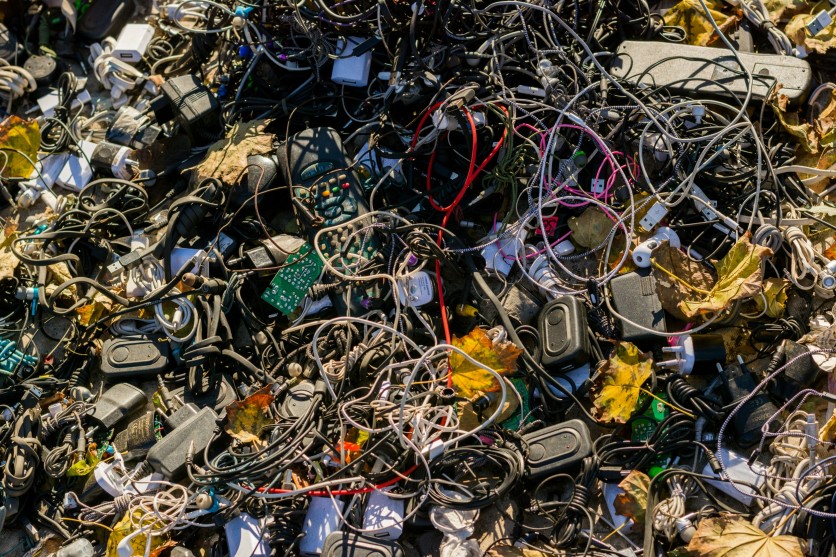The digital age has brought unprecedented convenience, but it also comes with a growing environmental cost: electronic waste. Global e-waste reached 62 million tons in 2022 and is projected to hit 65.3 million tons in 2025, growing nearly five times faster than current recycling rates. Rapid technological innovation, shorter device lifecycles, and the constant release of new gadgets drive this surge, leaving billions of dollars in recoverable materials unused. The e-waste crisis now demands urgent attention from consumers, companies, and policymakers alike.
As devices become outdated faster, the strain on recycling infrastructure intensifies. Without significant interventions, the environmental impact—including toxic pollution and resource depletion—will worsen. Understanding the drivers behind this issue and the role of emerging sustainability tech is essential for shaping solutions in tech recycling in 2025 and beyond.
Drivers Behind the E-Waste Crisis and Global Impact
Several factors fuel the e-waste crisis, starting with consumer behavior. The desire for frequent upgrades and the design of products for planned obsolescence significantly accelerate waste generation. Smartphones, laptops, and other electronics are discarded long before their end-of-life potential, resulting in massive environmental and economic losses.
Recycling efforts lag far behind e-waste generation. Only 22.3% of global e-waste is properly recycled, leaving roughly 347 million tons unmanaged in landfills or improperly discarded. This not only pollutes soil and water with hazardous chemicals but also results in the loss of valuable materials such as copper, gold, and lithium—resources that are increasingly scarce amid the tech boom.
With tech recycling in 2025 goals in place, industry and government efforts aim to recover these materials and close the loop on circular economies. However, scaling such initiatives remains a formidable challenge due to fragmented infrastructure, limited public awareness, and the high cost of advanced recycling technologies.
Corporate Initiatives in Sustainability Tech and Recycling
Corporations are beginning to recognize their responsibility in addressing the e-waste crisis. Leading tech companies like Apple, Dell, and HP have expanded trade-in programs, allowing consumers to return old devices for credit or safe disposal. These companies are also investing in robotics and automation for disassembling electronics, improving efficiency and reducing hazardous exposure for human workers.
Innovative startups are also driving the adoption of sustainability tech. Companies like Redwood Materials focus on recovering lithium and cobalt from batteries, while ReCell leverages AI for smart sorting of electronic components to streamline material recovery. These approaches not only reduce waste but also create new economic opportunities within circular supply chains.
Additionally, tech giants are implementing policies such as extended producer responsibility and committing to zero-waste goals, signaling a shift toward corporate accountability. Combining these efforts with public awareness campaigns ensures that both consumers and companies play a role in mitigating the e-waste crisis.
Read more: Second-Hand Phones Guide: Why Certified Refurbished Smartphones Are Outselling New Devices
How Consumers Can Play a Role in Reducing E-Waste
While corporate initiatives are crucial, individual actions can significantly impact the e-waste crisis. Small changes in habits, purchasing decisions, and disposal practices can collectively reduce waste and promote sustainability. Here are practical steps consumers can take:
- Extend Device Lifespans: Keep electronics longer by maintaining them properly, updating software, and using protective cases to prevent damage. Avoid unnecessary upgrades that contribute to the e-waste crisis.
- Participate in Trade-In Programs: Return old devices to manufacturers or retailers offering trade-in credits or recycling services, which ensures responsible disposal and recovery of valuable materials.
- Recycle Responsibly: Use certified e-waste recycling centers rather than discarding electronics in the trash. This helps prevent toxic chemicals from entering the environment and recovers metals like gold, copper, and lithium.
- Opt for Repair Over Replacement: Fix minor issues such as battery replacements or broken screens instead of replacing entire devices. This not only reduces tech recycling in 2025 demand but also saves money.
- Choose Sustainable Brands: Support companies that prioritize sustainability tech, eco-friendly designs, and circular economy practices, encouraging the industry to adopt greener policies.
- Donate or Repurpose Devices: Donate working devices to schools, charities, or community centers, giving electronics a second life and delaying disposal.
- Educate Others: Share knowledge about responsible e-waste practices with friends, family, and community groups to amplify impact and promote collective action.
By taking these steps, consumers can complement corporate efforts, making a real difference in reducing the environmental footprint of electronic devices while fostering a culture of responsible tech use.
Conclusion
The e-waste crisis continues to escalate, with projections reaching 82 million tons by 2030 if current trends persist. Addressing this challenge requires a multi-pronged approach: scaling tech recycling 2025 initiatives, adopting sustainability tech, and enforcing legislation that promotes circular economy practices.
Corporate responsibility and consumer participation are equally vital. Companies investing in automated disassembly, battery recovery, and eco-friendly design provide tangible pathways to reduce environmental harm. By combining innovation, policy, and education, the global community can tackle the e-waste crisis, recover valuable resources, and make technology more sustainable for the future.
Frequently Asked Questions
1. What causes the rapid growth of the e-waste crisis?
Short device lifespans, frequent tech upgrades, and planned obsolescence contribute to the exponential increase in discarded electronics.
2. How effective is current tech recycling 2025?
While recycling rates are improving, only about 22% of e-waste is properly processed, highlighting the need for more robust systems and technology adoption.
3. Which companies lead in sustainability tech for e-waste?
Apple, Dell, HP, and startups like Redwood Materials are at the forefront, implementing trade-in programs, robotics, and AI-driven recycling solutions.
4. Can consumers reduce their e-waste footprint?
Yes. Extending device lifespans, participating in trade-in programs, and responsibly disposing of electronics all help reduce environmental impact.
ⓒ 2025 TECHTIMES.com All rights reserved. Do not reproduce without permission.





